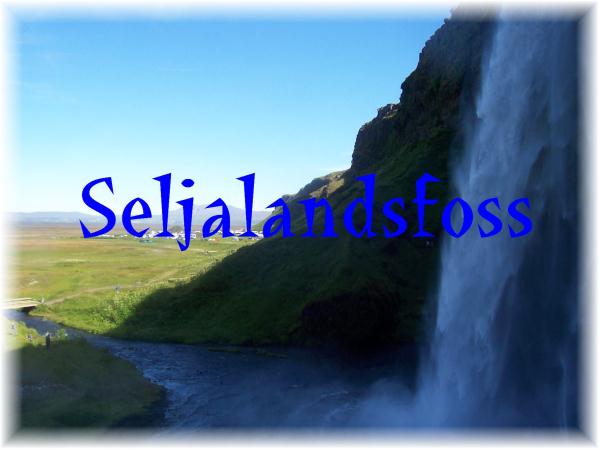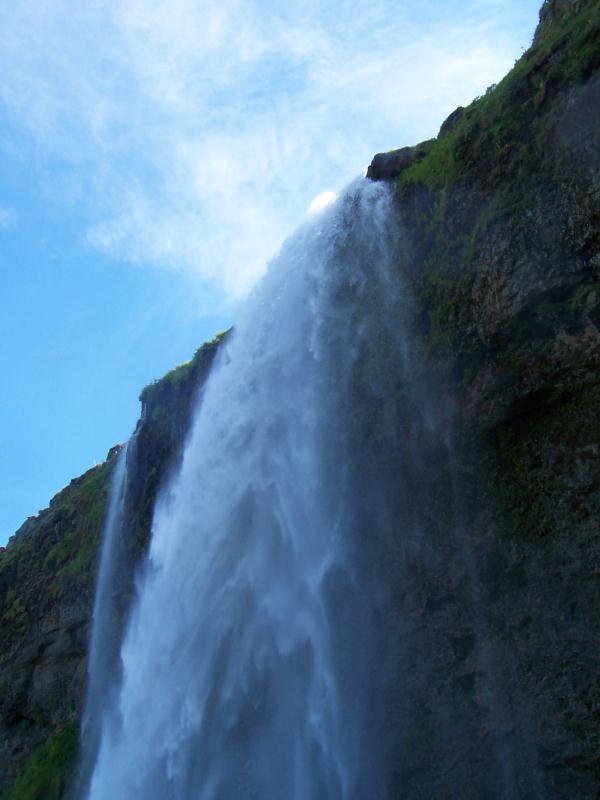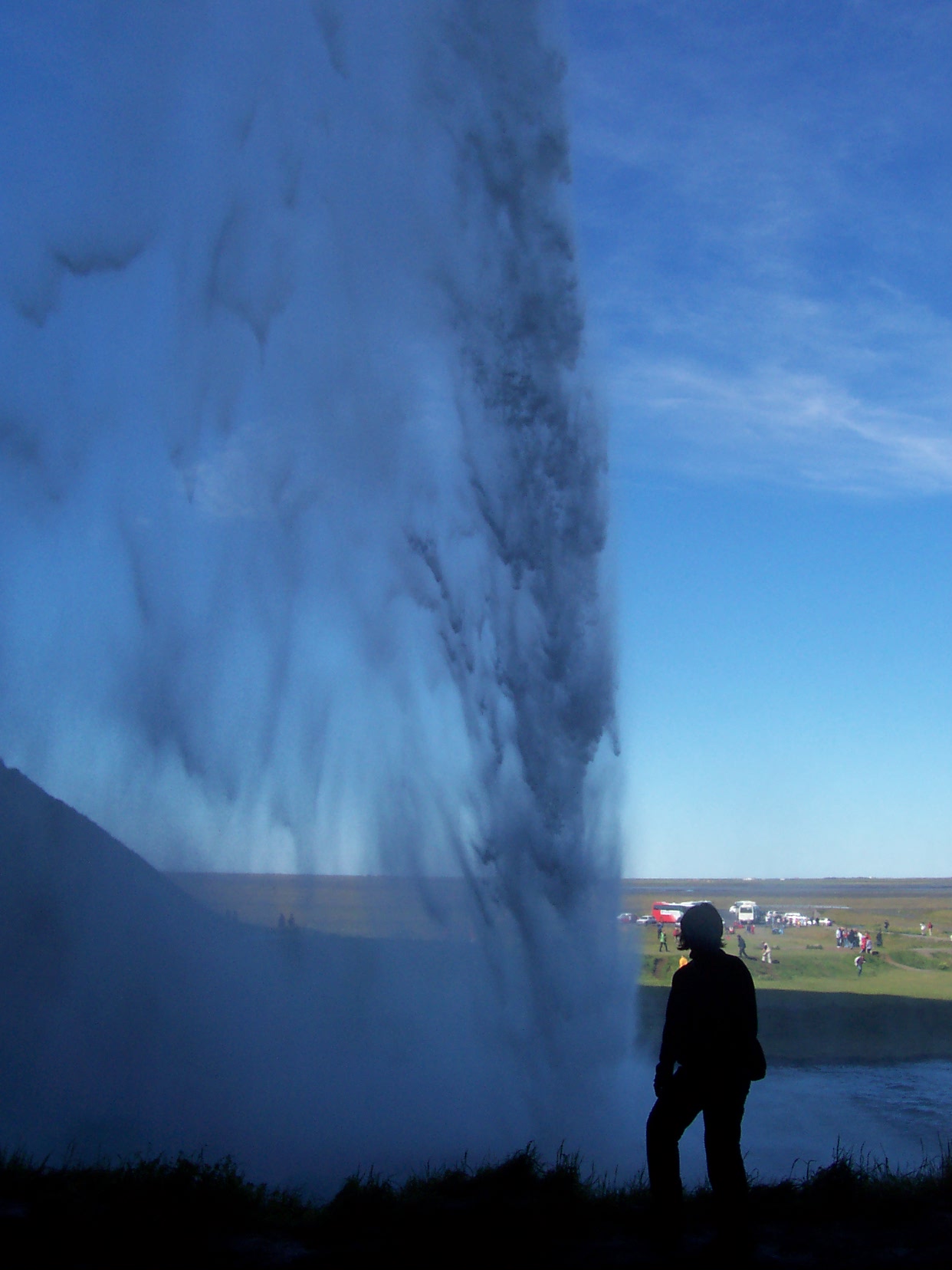
Seljalandsfoss is a pretty famous waterfall in the south of iceland. The claim to fame with this waterfall is that you can go behind it. If you're headed east on the Ring Road in the South of Iceland, you can see this conspicuous waterfall from the road, which is probably one of the main reasons why it's so famous. Nearby this waterfall are other smaller waterfalls including Gljúfurárfoss.
Look for this waterfall a short distance off the Ring Road about 28km west of Skogafoss or 76km east of the town of Selfoss.

Geology:
From the plains of the Markarfljót river, the Seljalandsmúli outcrop is clearly visible, with the Seljalandsfoss and Gljúfrabúi waterfalls.
The predominant rock type in the area is hyaloclastite (glassy volcanic aggregate), while tillite (hardened glacial till) is found behind Seljalandsfoss, along with patches of lava that flowed between the Gljúfurá and Seljalandsá rivers from Hornfell on Stóradalsheiði.
The lava field, known as Hamragarðahraun,forms the upper layer at the clifftop.
At the bottom is hyaloclastite, and between them a layer of tillite.
Hyaloclastite is a hydrated tuff-like breccia rich in black volcanic glass, formed during volcanic eruptions under water, under ice or where subaerial flows reach the sea or other bodies of water. It has the appearance of angular flat fragments sized between a millimeter to few centimeters. The fragmentation occurs by the force of the volcanic explosion, or by thermal shock during rapid cooling.
Several minerals are found in hyaloclastite masses. Sideromelane is a basalt glass rapidly quenched in water. It is transparent and pure, lacking the iron oxide crystals dispersed in the more commonly occurring tachylite. Fragments of these glasses are usually surrounded by a yellow waxy layer of palagonite, formed by reaction of sideromelane with water.
Hyaloclastite ridges, formed by subglacial eruptions during the Ice age, are a prominent landscape feature of Iceland and British Columbia. Hyaloclastite is usually found at subglacial volcanoes, such as tuyas, which is type of distinctive, flat-topped, steep-sided volcano formed when lava erupts through a thick glacier or ice sheet.
In lava deltas, hyaloclastites form the main constituent of foresets formed ahead of the expanding delta. The foresets fill in the seabed topography, eventually building up to sea level, allowing the subaerial flow to move forwards until it reaches the sea again.
Till or glacial till is unsorted glacial sediment. Glacial drift is a general term for the coarsely graded and extremely heterogeneous sediments of glacial origin. Glacial till is that part of glacial drift which was deposited directly by the glacier. It may vary from clays to mixtures of clay, sand, gravel and boulders. Clay in till may form in spherical shapes called till balls. If a till ball rolls around in a stream, it may pick up rocks from the streambed and become covered by rocks; thence it is known as an armored till ball.
Till is deposited at the terminal moraine, along the lateral and medial moraines and in the ground moraine of a glacier. As a glacier melts, especially a continental glacier, large amounts of till are washed away and deposited as outwash in sandurs by the rivers flowing from the glacier and as varves in any proglacial lakes which may form. Till may contain alluvial deposits of gems or other valuable ore minerals picked up by the glacier during its advance.
In cases where till has been indurated or lithified by subsequent burial into solid rock, it is known as the sedimentary rock tillite.

To log this Earthcache:
1. Please make a photo with you and your GPS behind the waterfall and with the waterfall in the background and upload it in your log. (This task is optional, no must!)
2. Send me the answers for the following questions / tasks:
- How tall is the Sejalandsfoss in metre?
- Describe the colour of the rocks behind the waterfall!
- Approximate the temperature of the water of the waterfall!


